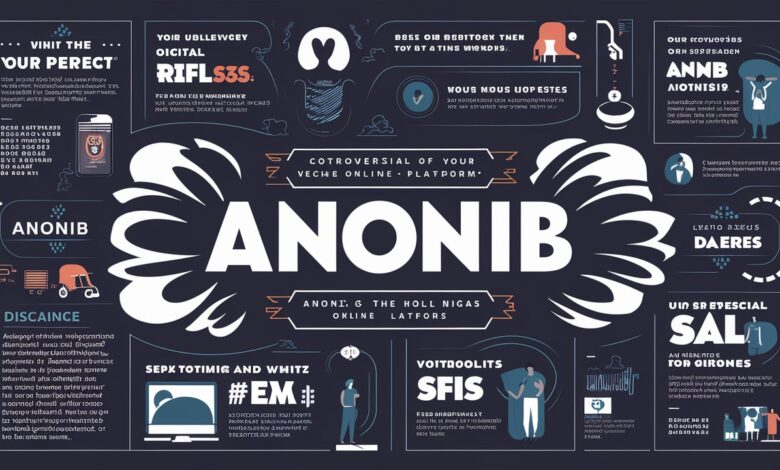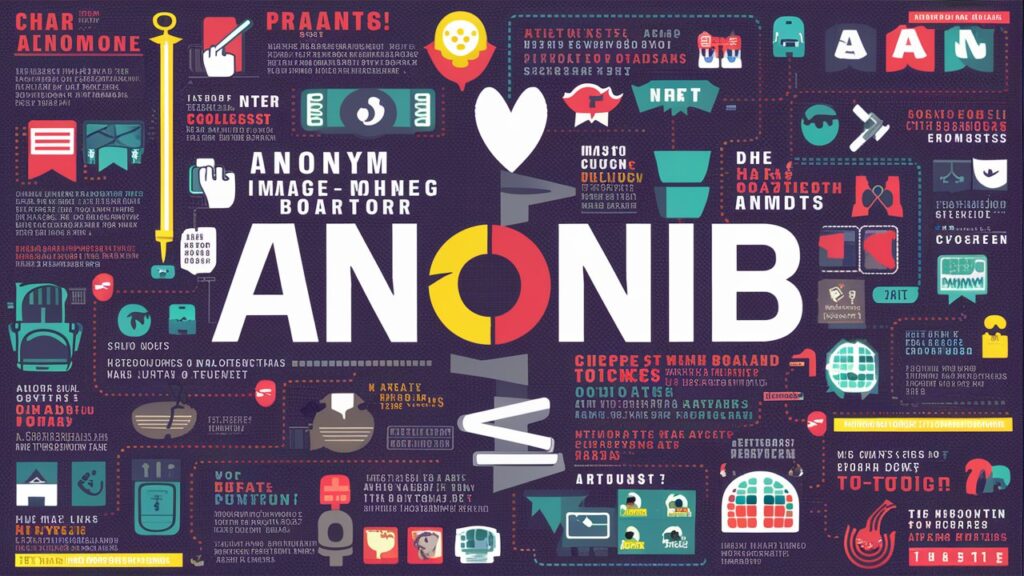AnonIBs – Everything You Need to Know About the Platform, Its Purpose, and Legal Risks

In the digital era, anonibs became one of the most controversial imageboard websites ever to exist. Known for its anonymous nature and unfiltered user interactions, this platform gained worldwide attention for both its structure and its association with explicit and unauthorized content sharing. Understanding what anonibs was, how it worked, and why it was eventually taken down is crucial for anyone studying internet culture, privacy, and online law enforcement.
In this comprehensive guide, we explore anonibs origins, uses, dangers, and legal implications in detail, providing readers with the full story behind this infamous site and its impact on modern internet privacy laws.
What is AnonIB?
AnonIB was an anonymous imageboard platform that allowed users to post and share images, discussions, and threads without revealing their identities. Similar to other platforms like 4chan and 8chan, AnonIB was structured into boards, each dedicated to specific topics such as photography, hobbies, regional interests, or adult content.
However, what made AnonIB particularly controversial was its reputation for hosting and distributing private or explicit images without consent. Users could anonymously post images, request photos from specific individuals, and create “threads” dedicated to sharing stolen or leaked content—often referred to as “revenge porn” or “non-consensual pornography.”
History and Origins of AnonIB
AnonIB was first established in the early 2000s as a spin-off of Japanese imageboard culture, which emphasized free speech and anonymity. The site grew rapidly, attracting a large international user base. Over time, regional boards appeared, such as UK IB, US IB, and Euro IB, each tailored to local audiences.
Initially, the site was used for harmless discussions and meme sharing. But as time passed, AnonIB’s anonymity attracted users looking to share illicit content, often crossing ethical and legal boundaries. Its structure made it nearly impossible to trace users, which further fueled its infamy.
Law enforcement agencies around the world began monitoring the platform after repeated reports of privacy violations and cyber exploitation. By the late 2010s, AnonIB was permanently shut down following several high-profile criminal investigations involving leaked photos and identity theft.
How AnonIB Worked
The mechanics of AnonIB were simple but effective for anonymity and fast content exchange. Users could create threads or respond to others’ posts without logging in or creating a profile. Each post appeared with a unique ID assigned temporarily, preserving anonymity while maintaining thread organization.
AnonIB’s features included:
-
Thread-Based Discussion: Similar to Reddit or 4chan, users could post text and images under specific categories.
-
Regional Boards: Boards were divided by location, allowing users to focus on local topics or individuals.
-
Image Uploading Tools: Users could directly upload photos without metadata, making tracing difficult.
-
Anonymous Replies: No user accounts or email verification was required, creating total anonymity.
While this model promoted open communication, it also created a breeding ground for cyber exploitation, bullying, and privacy abuse.
Why AnonIB Became Controversial
AnonIB’s downfall began when users started posting explicit images of individuals without consent, often accompanied by identifying details like names, social media links, or locations. This led to massive invasions of privacy and emotional harm for countless victims.
The site became a hotspot for:
-
Non-Consensual Image Sharing: Individuals’ private photos were uploaded without their permission.
-
Doxxing: Users exposed private details of others.
-
Cyber Harassment: Victims faced ongoing online stalking and blackmail.
-
Illegal Content Distribution: Some threads contained explicit material involving minors, prompting legal action.
Authorities in the United States, the United Kingdom, and other countries launched investigations that ultimately led to the permanent closure of AnonIB’s servers and the arrest of several individuals associated with the site.

Legal and Ethical Implications of AnonIB
The case of AnonIB brought major attention to the dark side of online anonymity. Governments and social platforms began enforcing stricter cybersecurity, privacy, and data protection laws to prevent similar incidents.
Some of the key legal takeaways from AnonIB include:
-
Revenge Porn Laws: Many countries strengthened laws against sharing intimate images without consent.
-
Data Protection Enforcement: Platforms are now required to moderate and remove private data or explicit content more effectively.
-
Cyber Forensics: Authorities improved their methods for tracing anonymous online activity through IP logging and digital fingerprinting.
-
Victim Support Services: Non-profit organizations began offering resources for victims of online exploitation and harassment.
AnonIB served as a case study in the dangers of unmoderated anonymity, pushing for greater accountability and digital ethics online.
Alternatives to AnonIB
After AnonIB’s shutdown, several similar platforms attempted to emerge, but most were either shut down quickly or heavily monitored. Today, there are legitimate and safe alternatives for users who want to share images or engage in anonymous discussions responsibly.
Some ethical alternatives include:
-
Reddit (with moderation and reporting systems)
-
Imgur (for public image sharing)
-
Discord Servers (for controlled community discussions)
-
4chan (with stricter monitoring on certain boards)
These platforms maintain some level of anonymity while enforcing terms of service that protect against illegal content.
The Lasting Impact of AnonIB
Even after its closure, anonibs left a lasting imprint on the internet. It changed how online communities think about consent, privacy, and the consequences of anonymity.
The incident also sparked crucial conversations about digital ethics, emphasizing that freedom of speech does not justify privacy violations. The rise and fall of AnonIB remain a reminder of how unregulated platforms can easily become tools for exploitation if not properly moderated.
As the internet evolves, digital safety and user accountability have become more critical than ever before. Users must understand that every upload, post, or comment leaves a digital footprint—and ethical responsibility is vital in every online interaction.
Frequently Asked Questions (FAQ)
1. What was AnonIB used for?
AnonIB was an anonymous imageboard used for posting pictures and threads. Over time, it became infamous for hosting explicit, non-consensual images.
2. Why was AnonIB shut down?
It was shut down due to widespread privacy violations and illegal sharing of intimate content, which led to multiple criminal investigations.
3. Is AnonIB still accessible today?
No. The original AnonIB website has been permanently taken offline, and any active clones are considered unsafe or illegal.
4. What are the legal risks of using similar sites?
Sharing or downloading private images without consent can lead to severe legal consequences, including imprisonment and fines.
5. Are there safe alternatives for anonymous sharing?
Yes. Platforms like Reddit and Imgur allow image sharing under strict moderation to prevent illegal activity.
Conclusion
The story of anonibs serves as a stark lesson in the dangers of unregulated online anonymity. While freedom of expression is vital, it must coexist with responsibility and respect for others’ privacy. The digital world thrives on connection—but without ethics, it becomes a breeding ground for exploitation.



